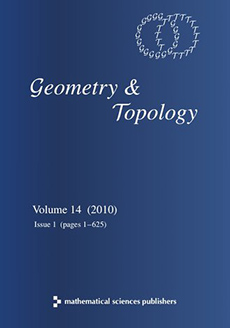Abstract
This article establishes, for an appropriate localisation of associative rings, a long exact sequence in algebraic –theory. The main result goes as follows. Let be an associative ring and let be the localisation with respect to a set of maps between finitely generated projective –modules. Suppose that vanishes for all . View each map in as a complex (of length 1, meaning one non-zero map between two non-zero objects) in the category of perfect complexes . Denote by the thick subcategory generated by these complexes. Then the canonical functor induces (up to direct factors) an equivalence . As a consequence, one obtains a homotopy fibre sequence
(up to surjectivity of ) of Waldhausen –theory spectra.
In subsequent articles [?, ?] we will present the – and –theoretic consequences of the main theorem in a form more suitable for the applications to surgery. For example if, in addition to the vanishing of , we also assume that every map in is a monomorphism, then there is a description of the homotopy fiber of the map as the Quillen –theory of a suitable exact category of torsion modules.
Citation
Amnon Neeman. Andrew Ranicki. "Noncommutative localisation in algebraic $K$–theory I." Geom. Topol. 8 (3) 1385 - 1425, 2004. https://doi.org/10.2140/gt.2004.8.1385
Information





